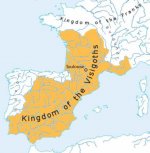Italian wasn't artificially created by Dante. Many North Italians had an important role to make the Tuscan the main language of Italy: Pietro Bembo, Alessandro Manzoni and many others.
Italian wasn't really accepted by some of the poorest and uneducated people. Italian was already the language of the upper class of most of the preunitarian states with few exceptions.
Even the Republic of Venice used for many centuries since the 1500 AD the Tuscan as language in the internal affairs: "
Così, per es., le relazioni degli ambasciatori veneziani al Senato della Serenissima all’inizio del XVI secolo appaiono scritte in un volgare sostanzialmente toscano, cioè italiano, ma che conserva ancora elementi fonologici, morfologici e lessicali veneziani."
"
La diffusione di una lingua letteraria di base toscana era cominciata già attorno alla fine del XIII secolo a Bologna; nel secolo successivo i principali poli di irradiazione furono le città del Veneto (Venezia, Treviso, Padova) e la corte dei Visconti a Milano. Nel 1332 il metricologo e poeta padovano Antonio da Tempo dichiara la
lingua tusca, cioè il toscano,
magis apta [...]
ad literam sive literaturam quam aliae linguae «più adatta all’espressione scritta e alla letteratura delle altre lingue». Sempre nel Trecento, il modello fiorentino si diffonde anche in centri dell’Italia centrale e meridionale come Perugia e Napoli. Il processo di unificazione della lingua letteraria, anzitutto poetica, procede – anche se con esitazioni e regressioni – nel Quattrocento, accelerando alla fine del secolo, grazie soprattutto all’affermarsi del petrarchismo.
Più tarda è l’adozione del toscano nella lingua amministrativa.
La prima corte che adotta il fiorentino trecentesco come modello, oltre che nella letteratura, anche nella prassi cancelleresca, è quella di Ludovico il Moro, signore di Milano tra il 1480 e il 1499 (Vitale 1988).
Le lingue in uso nelle corti d’Italia tra Quattrocento e Cinquecento avevano abbandonato i tratti dialettali più evidenti, ma facevano pur sempre concessioni nella fonetica e nella morfologia ai volgari locali. Il successo della proposta arcaizzante di ➔ Pietro Bembo, che appoggiava la lingua letteraria all’uso degli autori fiorentini del Trecento, soprattutto ➔ Francesco Petrarca e ➔ Giovanni Boccaccio, spezza il filo che le lingue cortigiane mantenevano con la lingua parlata, e dunque anche con i volgari locali.
Nell’ambito cancelleresco, amministrativo, giuridico, ecc., l’uso dell’italiano-fiorentino restava basato su conoscenze approssimative e condizionato dal volgare locale più a lungo di quanto accada nella lingua letteraria.
Così, per es., le relazioni degli ambasciatori veneziani al Senato della Serenissima all’inizio del XVI secolo appaiono scritte in un volgare sostanzialmente toscano, cioè italiano, ma che conserva ancora elementi fonologici, morfologici e lessicali veneziani. Questo genere di lingua è chiamata spesso tosco-veneto.
Nei decenni successivi i tratti locali vennero progressivamente abbandonati, e si giunse entro la fine del secolo a una pressoché completa toscanizzazione (Durante 1981: 163-164; Tomasin 2001: 158-164). L’adozione del modello toscano nel secondo Cinquecento e nel Seicento è un fenomeno che riguarda più in generale la lingua degli scriventi colti di tutta Italia. Da questo termine in avanti solo le scritture dei semicolti (➔ italiano popolare) presentano fenomeni di ibridismo tra la norma scritta nazionale, l’italiano, e la lingua parlata locale, il dialetto (Bartoli Langeli 2000). "
Source:
http://www.treccani.it/enciclopedia/volgari-medievali_(Enciclopedia-dell'Italiano)/
Northern Italian Pomo and French Pom both derives from Latin
pomum, generic term for a fruit. In Sicilian there is
pumu, in Italian/Tuscan there is
pomo (just as in Gallo-Italic and Venetian) but considered obsolete in Tuscany.
Giovanni Boccaccio (medieval Tuscan writer) from
The Decameron
«nell'un di questi forzieri è la mia corona, la verga reale e 'l pomo »
"dì" is Italian/Tuscan of Latin origin (Latin
dies), not northern Italian only. If you were Italian, you'd know it.
buon dì (or
buondì) and
buongiorno are both Italian. Buondì is still used today in many regions of Italy, not only in North Italy.
http://www.treccani.it/vocabolario/di/
Giovanni Boccaccio (medieval Tuscan writer) from
The Decameron
«Io son veramente colui che quell'uomo uccisi istamane in sul di" »
Dì is not Gallo-Italic and Romanian doesn't surely derive from a Gallo-Italic dialect.





